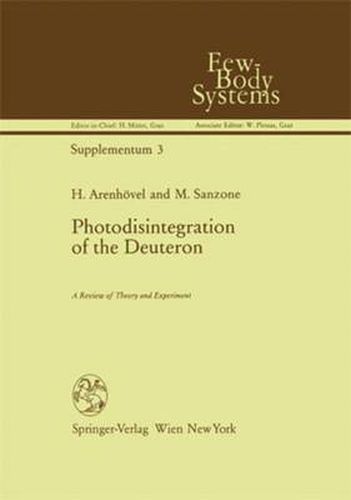Readings Newsletter
Become a Readings Member to make your shopping experience even easier.
Sign in or sign up for free!
You’re not far away from qualifying for FREE standard shipping within Australia
You’ve qualified for FREE standard shipping within Australia
The cart is loading…






This title is printed to order. This book may have been self-published. If so, we cannot guarantee the quality of the content. In the main most books will have gone through the editing process however some may not. We therefore suggest that you be aware of this before ordering this book. If in doubt check either the author or publisher’s details as we are unable to accept any returns unless they are faulty. Please contact us if you have any questions.
More than 50 years ago, in 1934, Chadwick and Goldhaber (ChG 34) published a paper entitled A ‘Nuclear Photo-effect’: Disintegration of the Diplon by -y-Rays. l in the introduction: They noted By analogy with the excitation and ionisation of atoms by light, one might expect that any complex nucleus should be excited or ‘ionised’, that is, disintegrated, by -y-rays of suitable energy , and furthermore: Heavy hydrogen was chosen as the element first to be examined, because the diplon has a small mass defect and also because it is the simplest of all nuclear systems and its properties are as important in nuclear theory as the hydrogen is in atomic theory . Almost at the same time, in 1935, the first theoretical paper on the photodisinte gration of the deuteron entitled Quantum theory of the diplon by Bethe and Peierls (BeP 35) appeared. It is not without significance that these two papers mark the be ginning of photonuclear physics in general and emphasize in particular the special role the two-body system has played in nuclear physics since then and still plays. A steady flow of experimental and theoretical papers on deuteron photo disintegration and its inverse reaction, n-p capture, shows the continuing interest in this fundamental process (see fig. 1.1).
$9.00 standard shipping within Australia
FREE standard shipping within Australia for orders over $100.00
Express & International shipping calculated at checkout
This title is printed to order. This book may have been self-published. If so, we cannot guarantee the quality of the content. In the main most books will have gone through the editing process however some may not. We therefore suggest that you be aware of this before ordering this book. If in doubt check either the author or publisher’s details as we are unable to accept any returns unless they are faulty. Please contact us if you have any questions.
More than 50 years ago, in 1934, Chadwick and Goldhaber (ChG 34) published a paper entitled A ‘Nuclear Photo-effect’: Disintegration of the Diplon by -y-Rays. l in the introduction: They noted By analogy with the excitation and ionisation of atoms by light, one might expect that any complex nucleus should be excited or ‘ionised’, that is, disintegrated, by -y-rays of suitable energy , and furthermore: Heavy hydrogen was chosen as the element first to be examined, because the diplon has a small mass defect and also because it is the simplest of all nuclear systems and its properties are as important in nuclear theory as the hydrogen is in atomic theory . Almost at the same time, in 1935, the first theoretical paper on the photodisinte gration of the deuteron entitled Quantum theory of the diplon by Bethe and Peierls (BeP 35) appeared. It is not without significance that these two papers mark the be ginning of photonuclear physics in general and emphasize in particular the special role the two-body system has played in nuclear physics since then and still plays. A steady flow of experimental and theoretical papers on deuteron photo disintegration and its inverse reaction, n-p capture, shows the continuing interest in this fundamental process (see fig. 1.1).